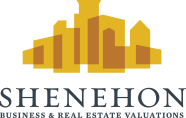by Madeline M. Strachota and Johnny Meeker
A provision in the 2017 Tax Cuts and Jobs Act established preferential tax treatment for investments in distressed, lower-income areas around the country, known as Qualified Opportunity Zones (QOZ). The Opportunity Zone program was designed to attract investment that would spur economic development and job creation in areas that would otherwise not provide attractive returns for investors. While other programs in the past sought similar outcomes, this program creates the largest incentives for investors yet.
The Opportunity Zone program can benefit investors in three main ways:
1. Deferred taxes on capital gains from an asset sale (original investment) that are rolled into the QOZ until 12/31/2026, or when the new investment in the QOZ is sold, whichever comes first.
2. Permanent reduction of deferred gain on the original investment by 10% after holding the new investment for 5 years and an additional 5% deduction (totaling 15%) after holding the new investment for 7 years.
3. An exclusion of taxable gain on sale of the new investment if held for 10 years.
As with most tax incentive programs, investors must meet certain requirements to qualify for Opportunity Zone program benefits. For example, investors must pay deferred taxes from sources other than the initial investment in the QOZ, which must remain invested in the QOZ for 10 or more years. Additionally, all qualifying investments must come from capital gains from assets sales (unlike a 1031 exchange there is no like-kind requirement) and investors must invest through Qualified Opportunity Funds (QOF), which are investment vehicles registered as partnerships or corporations that hold 90% of their assets in qualified businesses or property. Qualified businesses must:
– Generate at least 50% of their gross income from conducting business within a QOZ.
– Use a substantial portion of its intangible property in conducting business within a QOZ.
– Use 70% of tangible property in a QOZ.
Qualified business zone property must either commence with the Qualified Opportunity Fund (any time after December 31, 2017), or the fund must substantially improve the property. This means that within 30 months after the date of acquisition of such property, the improvements to the property must exceed the original basis. If the tangible property is a building, the proposed regulations stipulate that “substantial improvement” is measured only on the basis of the building, not on the basis of the underlying land. Furthermore, there are restrictions on the type of businesses and properties that can qualify for Opportunity Zone benefits. For example, country clubs, strip clubs, casinos, massage parlors, and tanning salons do not qualify. Any eligible taxpayers, individuals or corporations, can make investments in opportunity funds. Additionally, there is no cap on investment.
Investors need to contribute capital gains dollars into a QOF by December 31, 2019 in order to take advantage of the complete program benefits. The investment must be held for five to seven years before December 31, 2026 to qualify for the stepped-up-basis benefit for deferred capital gains. Consequently, an individual invested in a QOF on December 31, 2020 would qualify for a 10% stepped-up-basis, but not the additional 5% because they did not hold the asset for seven years prior to when deferred taxes are due on December 31, 2026.
| Timeline | ≤180 Days Before QOZ Investment | Dec. 31, 2018 | Dec. 31, 2023 | Dec. 31, 2026 | 10+ Years After Initial QOZ Investment | |
| Action | Original investment in assets of any type. | Sell original investment. | Invest capital gains into QOZ. | Hold investment for 5 years. | Hold investment for 7 years. | Hold investment for 10 years. |
| Benefit | Defer paying taxes on capital gains from original investment. | Permanent 10% reduction of deferred gain on the original investment. | Additional 5% reduction of deferred gain on the original investment. | An exclusion of taxable gain on sale of the new investment. | ||
| Example | Invest $100K in Apple Stock in Jan. 2, 2002. | Sell investment in Apple Stock on August 1, 2018 for $10.6M | Invest $10.5M of deferred taxable gain into QOZ via QOF. $5M to purchase existing warehouse and $5.5M to redevelop into apartments. | $10.5-$1.05M= $9.45M is new deferred taxable gain. | $9.45-$.53M= $8.92M is new deferred taxable gain. Pay capital gains tax on $8.92 original (Apple) deferred capital gain. |
1. Sell QOZ investment for $15M. 2. Do not pay taxes on the $4.5M gain from QOZ investment. |
Investors must be nimble to take advantage of the Opportunity Zone Program benefits before the first program deadline passes on December 31, 2019.
Given requirements for substantial improvement, there are two investment strategies particularly well-suited for Opportunity Zone program benefits: investing in ground-up commercial real estate development and investing in new businesses located within QOZ. If these strategies catch on among investors, vacant land values in QOZ, especially the highest demand QOZ, will increase as investment pours into these areas before program deadlines. Given that the Opportunity Zones incentive is compatible with other tax credit programs, savvy investors will also seek out complementary New Markets Tax Credits, Low Income Housing Tax Credits, Historic Tax Credits, and other economic development programs.
Even before the IRS released additional guidance in October, investors had purchased $2.6 billion in QOZ real estate as of November 2, 2018, an 8% increase from the same time last year, according to CoStar. Given the extent of preferential treatment in the Opportunity Zone program, investment in QOZ will likely unlock hundreds of billions of the estimated trillions of dollars in unrealized capital gains in the US. Whether the program benefits the populations in QOZ or investors to a greater degree is yet to be determined; however, increased investment will have a positive impact on asset values in these areas, even for businesses and property that do not qualify for benefits under the program. While the main Opportunity Zone program incentives end on December 31, 2026, many speculate that the government could extend the program so that the program is not a one-time stimulus.
A snapshot from the Minnesota Department of Employment and Economic Development of the designated Qualified Opportunity Zones in the Twin Cities metropolitan area.
STAY IN THE LOOP
Subscribe to our newsletter.
Explore More




